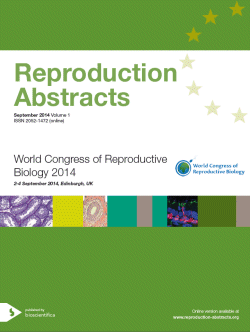Searchable abstracts of presentations at key conferences on reproductive biology and medicine

World Congress of Reproductive Biology 2014
Edinburgh,
UK
02 Sept 2014 - 04 Sept 2014

World Congress on Reproductive Biology 2014, 02 - 04 September 2014; Edinburgh, UK



